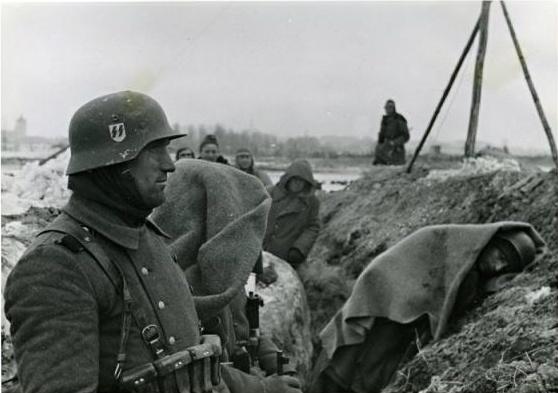10. Battle of Monte Cassino, 17 January–18 May 1944: 185,000 casualties
Waged between the Allies and the joint German and Italian troops in the early part of 1944, the Battle of Monte Cassino was one of the hardest fought battles of the Second World War. The main objective for the Allied forces fighting their way up from Southern Italy was to break through the Germans’ Gustav Line — a series of military fortifications running across Italy — and gain control of Rome. Named after the 1,400-year-old monastery of Monte Cassino that stood at the center of the German defensive line (and which was controversially destroyed by American bombers during the battle), the fighting was made up of four smaller battles that took place in January, February, March and May, respectively. The eventual capture of Rome came at a high price, with at least 125,000 casualties on all sides — and as many as 185,000 by some estimates.
9. Battle of the Bulge, 16 December 1944–25 January 1945: 186,369 casualties
The Battle of the Bulge — so-called by the British because of the
“bulge” in the map where the German forces broke the Allied line — was
the last major German offensive on the Western Front of World War II.
Also known as the Ardennes Offensive — named after the densely forested
area of Belgium, France and Luxembourg — the aim of the operation was to
split the Allied troops in two, capture Antwerp in the process, then
destroy the remaining Allied forces. Fortunately for the Allies, the
battle did not go to plan for the Germans. Despite catching an
overconfident and unsuspecting Allied force unawares, superior numbers,
timely reinforcements and improving weather conditions (which allowed
the Allied air forces to take to the skies) sealed the Germans’ fate.
With around 840,000 men committed, it was the largest battle the
American Army fought in World War II, as well as among the bloodiest.












1) Battle of Stalingrad - ~2.000.000 (East Front)
ReplyDelete2) Battle of Moscow - ~1.500.000 (East Front)
3) Battle of the Dnieper - ~1.000.000 (East Front)
4) Battle of Kiev (1941) - ~750.000 (East Front)
5) Operation Bagration - ~600.000 (East Front)
6)Battle of Narva - ~500.000 (East Front)
7) Vistula–Oder Offensive - ~400.000 (East Front)
8) Battle in Berlin - ~350.000 (East Front)
9) Battle of Kursk - ~350.000 (East Front)
10) Battle of Luzon - ~250.000 ( Pacific Theater)
Second Battle of Kharkov - ~200.000 (East Front)
Battle of the Bulge - ~150.000 (West Front)
Battle of France - ~150.000 (West Front)
First_Battle_of_Kharkov - ~100.000 (East Front)
Battle of Monte Cassino - ~100.000 (Itala)